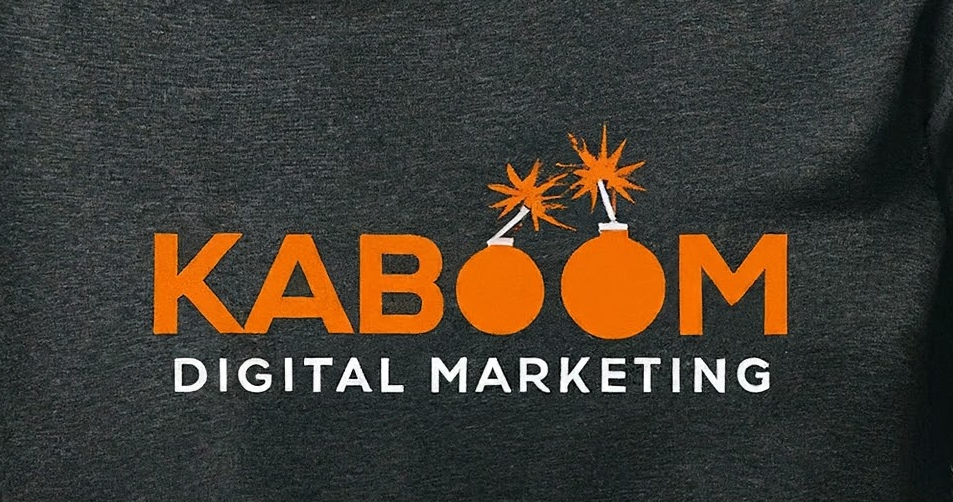Follow Us
10 Street Name, City Name
Country, Zip Code
602-962-8248
kaboomdigitalmarketing@gmail.com
Small Business Marketing Budget Guide: Maximize ROI with Smart Spending Strategies

Crack the Code: A Small Business Owner's Blueprint for Marketing Budget Success
Every dollar counts when you're running a small business, especially when it comes to marketing. Many business owners find themselves caught in a frustrating cycle: spending money on marketing without seeing meaningful results. The secret?
A strategic, thoughtful approach to budget allocation that turns marketing from a cost center into a growth engine.
Why Marketing Budgeting Matters
Imagine your marketing budget as a strategic investment, not just an expense. The right approach can transform how you grow your business, attract customers, and build long-term success. But here's the challenge: with limited resources, how do you make every marketing dollar work harder?
Real-World Scenario: Sarah's Bakery
Take Sarah, who owns a local bakery. She initially scattered her $1,000 marketing budget across random platforms, seeing minimal return. After implementing a strategic approach, she redirected her spending and saw a 40% increase in customer engagement and sales.
Step 1: Determining Your Marketing Budget
Before diving into channels, establish a realistic budget. Here's a simple framework:
Revenue-Based Approach: Typically, small businesses should allocate 7-8% of their total revenue to marketing.
Stage-Based Allocation:
- Startup/Early Stage: Up to 12-20% of revenue
- Established Business: 6-12% of revenue
- Growth Stage: Potentially higher, depending on expansion goals
Pro Tip: Start conservative. It's easier to scale up than recover from overspending.
Strategic Channel Allocation: Where to Invest
1. Email Marketing: Your Digital Relationship Builder
Email marketing is a digital marketing strategy that involves sending emails to a group of recipients with the goal of promoting products, services, or engaging with the audience. It is a direct form of communication with potential or existing customers and aims to build relationships, drive conversions, or provide valuable content.
Here are key aspects of email marketing:
Targeted Messaging: Emails are typically sent to a specific audience, segmented by factors like demographics, behavior, purchase history, or engagement level, to make the message more relevant and personalized.
Campaign Types:
- Promotional Emails: These focus on selling products, announcing sales, or offering discounts.
- Transactional Emails: These include order confirmations, receipts, or shipping notifications.
- Newsletter Emails: Regular updates providing valuable content, industry news, or company information.
- Retention Emails: Designed to re-engage customers or keep your brand top-of-mind.
Automation: Email marketing platforms often allow marketers to automate campaigns, such as sending welcome emails, abandoned cart reminders, or birthday offers.
Personalization: Modern email marketing tools enable dynamic content that can be customized based on recipient data, making the emails more relevant and likely to drive action.
Metrics & Analysis: Key metrics like open rates, click-through rates (CTR), conversion rates, and unsubscribe rates are used to measure the effectiveness of email campaigns and improve future communications.
Email marketing is a cost-effective way for businesses to reach a wide audience, build brand loyalty, and increase sales.
Why It Works: Lowest cost-per-acquisition
Budget Allocation: 20-25% of marketing spend
Key Focus:
Build targeted email lists
Create personalized, value-driven content
Implement automation for consistent engagement
2. Pay-Per-Click (PPC) Advertising: Immediate Visibility
Pay-per-click (PPC) advertising is a digital marketing model where advertisers pay a fee each time their ad is clicked. Essentially, it's a way of buying visits to a website rather than earning them organically. PPC is most commonly associated with search engine advertising, such as Google Ads, but can also apply to display ads, social media platforms, and other online channels. You can learn more about our pay per click advertising service when you are ready to grow your business.
Key Components of PPC:
Ad Auction:
PPC ads typically work on an auction-based system. Advertisers bid on specific keywords related to their business, and the search engine (or platform) determines the ad's placement based on the bid amount and the ad's relevance.
Keywords:
Advertisers choose keywords that are relevant to their business or product. When users search for those keywords, the ads are shown in search engine results or on websites that have partnered with the ad platform.
Ad Copy and Landing Pages:
The ad copy (text, images, or videos) should be compelling and aligned with the search intent. Ads direct users to landing pages where they can take further actions, such as making a purchase, signing up, or requesting more information.
Cost:
Advertisers pay each time a user clicks on their ad (hence "pay-per-click"). The cost per click (CPC) can vary based on competition for the chosen keywords, the quality of the ad, and the relevance of the landing page.
Platforms:
Popular PPC platforms include Google Ads, Bing Ads, and social media platforms like Facebook, Instagram, LinkedIn, and Twitter, where advertisers can bid to show ads to targeted audiences.
Targeting:
PPC allows precise targeting of specific audiences based on factors like demographics, location, behavior, device, and interests. This helps ensure that the right people see the ads.
Types of PPC Ads:
Search Ads: Appear in search engine results when users search for relevant keywords.
Display Ads: Appear on websites or apps in the form of banners, images, or videos.
Social Media Ads: Appear on social media platforms, typically in the form of promoted posts or ads in the sidebar.
Shopping Ads: Display product listings directly in search results with pricing and images.
Remarketing Ads: Target users who have previously visited your website but didn’t complete a desired action (like making a purchase).
Benefits of PPC:
Quick Results: Ads can generate traffic immediately after launch, unlike organic search efforts, which can take time.
Scalability: Advertisers can adjust budgets and bids to scale campaigns based on performance.
Targeted Reach: Ads can be shown to specific audiences, increasing the likelihood of relevant clicks and conversions.
Key Metrics to Monitor:
Click-Through Rate (CTR): The percentage of people who click on the ad after seeing it.
Cost Per Click (CPC): The amount paid per click on the ad.
Conversion Rate: The percentage of visitors who complete a desired action (like a purchase) after clicking the ad.
Return on Ad Spend (ROAS): The revenue generated from the ad compared to the cost of the ad.
Why It Works: Instant traffic and measurable results
Budget Allocation: 30-40% of marketing spend
Smart Strategies:
Start with small, targeted campaigns
Use precise audience targeting
Monitor cost-per-click (CPC) ruthlessly
A/B test ad creatives
3. Search Engine Optimization (SEO): Long-Term Growth Foundation
Search Engine Optimization (SEO) is the process of optimizing a website to improve its visibility and ranking in search engine results pages (SERPs) for specific keywords or phrases. The goal of SEO is to increase organic (non-paid) traffic to the website by making it more attractive and relevant to search engines like Google, Bing, or Yahoo.
SEO involves a combination of techniques and strategies aimed at improving both the content and structure of a website, making it easier for search engines to crawl, index, and rank it higher for relevant search queries.
Key Aspects of SEO:
On-Page SEO:
This refers to all the elements on a website that can be optimized directly. It includes:
Keyword Research: Identifying the terms and phrases users are searching for and incorporating them into the website's content.
Content Quality: Creating valuable, informative, and engaging content that answers users' search queries.
Title Tags & Meta Descriptions: Optimizing the page title and meta descriptions to be compelling and contain relevant keywords.
Headings (H1, H2, etc.): Structuring content with clear headings to improve readability and SEO.
Internal Linking: Linking to other pages on your website to help search engines crawl your site and improve user experience.
URL Structure: Creating clean, descriptive URLs that are easy for both users and search engines to understand.
Off-Page SEO:
This refers to activities that take place outside of your website but affect its ranking. Key aspects include:
Backlinks: Getting other reputable websites to link back to your site. High-quality backlinks from authoritative sources can significantly boost your site's credibility and rankings.
Social Signals: While not a direct ranking factor, social media activity (shares, likes, mentions) can indirectly affect SEO by increasing visibility and generating traffic.
Brand Mentions: Being mentioned across the web can help build trust and recognition, even without direct links.
Technical SEO:
Technical SEO focuses on optimizing the infrastructure of your website to ensure it’s easy for search engines to crawl and index. This includes:
- Site Speed: Ensuring that the website loads quickly, as slow-loading sites can harm rankings and user experience.
- Mobile-Friendliness: Optimizing your site for mobile devices, as search engines prioritize mobile-friendly websites.
- XML Sitemaps: Providing search engines with a map of your site’s content to help them crawl it efficiently.
- Robots.txt File: Guiding search engines on which pages to crawl and which to avoid.
- Secure Website (HTTPS): Google gives preference to sites that are secure, so using HTTPS is essential for SEO.
Local SEO:
Local SEO focuses on optimizing your website to appear in local search results (for example, when someone searches for "restaurants near me"). This includes:
Google My Business: Creating and optimizing a Google My Business profile to appear in local map packs and local search results.
Local Citations: Ensuring your business is listed on local directories and review sites.
NAP Consistency: Ensuring that your Name, Address, and Phone number (NAP) are consistent across the web.
Content SEO:
Content is at the heart of SEO. High-quality, well-researched, and user-friendly content not only helps attract visitors but also encourages engagement and backlinks. Content SEO involves:
- Blog Posts: Regularly publishing informative articles on topics relevant to your target audience.
- Keyword Optimization: Ensuring that the right keywords are naturally incorporated into the content.
- Multimedia: Using images, videos, and infographics to make content more engaging and shareable.
SEO Strategies:
- Keyword Optimization: Carefully researching and strategically placing relevant keywords throughout your website to help it rank for the terms people are searching for.
- Link Building: Acquiring backlinks from high-authority websites to improve domain authority and rankings.
- User Experience (UX): Ensuring a positive user experience on the website through easy navigation, fast loading times, and mobile optimization.
- Content Marketing: Regularly creating and sharing high-quality content that is useful to your audience and encourages engagement.
Benefits of SEO:
- Increased Organic Traffic: By improving rankings for relevant search terms, SEO helps bring more visitors to your site without paid ads.
- Cost-Effective: While SEO can require time and effort, it typically offers a higher return on investment (ROI) compared to paid advertising in the long term.
- Better User Experience: SEO often involves improving your site’s speed, usability, and overall experience, which can lead to higher user satisfaction.
- Brand Credibility: Websites that rank highly in search engines are often perceived as more credible and trustworthy.
SEO Metrics to Track:
- Organic Traffic: The number of visitors coming from search engines.
- Keyword Rankings: The positions your website holds for specific keywords.
- Bounce Rate: The percentage of visitors who leave your site after viewing just one page, which can indicate whether your site meets user expectations.
- Backlinks: The number and quality of backlinks pointing to your site.
- Conversion Rate: The percentage of visitors who complete a desired action on your site (such as making a purchase or filling out a contact form).
Why It Works: Sustainable, organic growth
Budget Allocation: 20-30% of marketing spend
Key Investments:
Local SEO optimization
Content creation
Technical website improvements
Local directory listings
4. Social Media Marketing: Community and Brand Building
- Why It Works: Enhanced brand awareness and engagement
- Budget Allocation: 10-15% of marketing spend
- Strategic Approach:
- Choose 1-2 platforms most relevant to your audience
- Focus on quality content over quantity
- Leverage user-generated content
- Use targeted boosted posts
Avoiding Common Budget Pitfalls
Red Flags to Watch:
Spreading budget too thin across multiple channels
Neglecting performance tracking
Failing to adjust strategies based on data
Chasing trendy platforms without understanding your audience
Performance Tracking Essentials:
Set clear, measurable goals for each channel
Use free analytics tools (Google Analytics, platform-specific insights)
Review performance monthly
Be prepared to reallocate funds based on results
The 80/20 Rule of Marketing Budget
Focus 80% of your budget on proven, consistent channels and reserve 20% for experimental strategies. This approach balances reliable growth with innovation.
Final Thoughts: Your Budget, Your Growth Strategy
Marketing isn't about spending more—it's about spending smarter. By understanding your business goals, knowing your audience, and strategically allocating resources, you can create a marketing budget that drives real, measurable growth.
Remember: Your marketing budget is a living strategy. Continuously learn, adapt, and optimize.
Quick Action Checklist:
- Calculate your baseline marketing budget
- Identify your top 2-3 marketing channels
- Set specific, measurable goals
- Implement tracking mechanisms
- Review and adjust quarterly
Invest wisely, track meticulously, and watch your small business grow.




